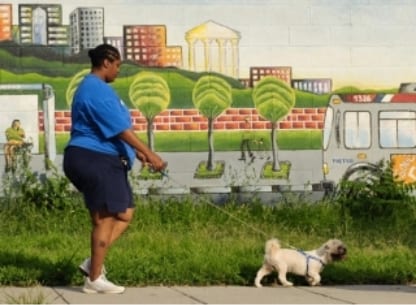JUMP TO:
A Vision for an Equitable DC
A Vision for An Equitable DC by the Urban Institute, and commissioned by the Meyer Foundation and the Consumer Health Foundation, examines census data around income and assets, employment, education, health, and housing to compare the current reality of racial inequity for DC residents with a vision for what equity would look like.
A Vision for an Equitable DC
A Vision for An Equitable DC by the Urban Institute, and commissioned by the Meyer Foundation and the Consumer Health Foundation, examines census data around income and assets, employment, education, health, and housing to compare the current reality of racial inequity for DC residents with a vision for what equity would look like.
Access the full digital feature.
A Vision for An Equitable DC by the Urban Institute, and commissioned by the Meyer Foundation and the Consumer Health Foundation, examines census data around income and assets, employment, education, health, and housing to compare the current reality of racial inequity for DC residents with a vision for what equity would look like.
The data reveal stark differences by race and ethnicity in each area. For example, more than 80 percent of black children and 22 percent of Hispanic children in DC live in poverty, while the number of white children living in poverty is statistically zero. Further, the unemployment rate for black DC residents is more than 5.5 times that of white residents, and double that of Hispanic residents.
In an equitable DC:
- 33,000 more black residents and 12,000 more Hispanic residents would have high school degrees, and almost 98,000 more black residents would have some college
- 24,000 more black residents and 2,200 more Hispanic residents would be employed, including 17,000 residents of wards 5, 7, and 8
- 35,000 more black families and 5,200 more Latino families would earn a living wage (which in DC is more than $38 an hour)
- 14,000 more black households (7,500 in Ward 8 alone) and 3,900 more Latino households would own homes
- No child would live in poverty
Without DC’s stark racial inequities, the city could be a more prosperous and competitive place. According to the National Equity Atlas, if people of color earned the same as their white counterparts, the city’s economy would have been more than $65 billion larger in 2012.
Access the full digital feature, A Vision for an Equitable DC.
Read about the release of the digital feature and its accompanying event, DC in Color.
Find highlights from the event and its follow up on Twitter using #DCinColor.

